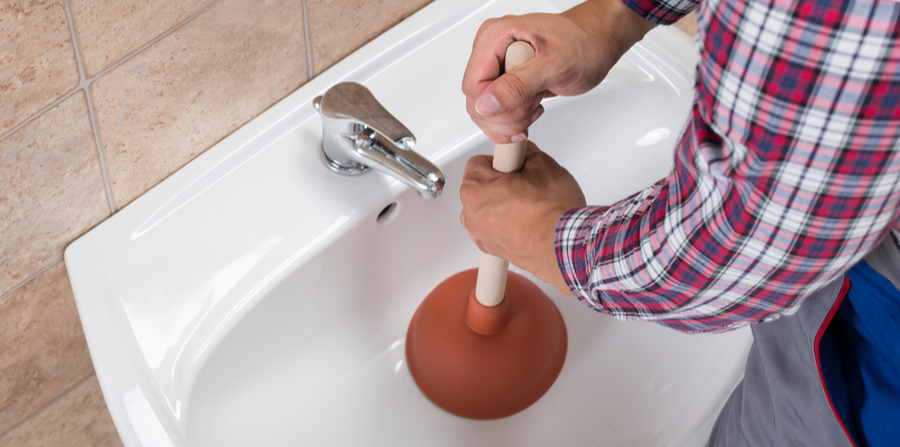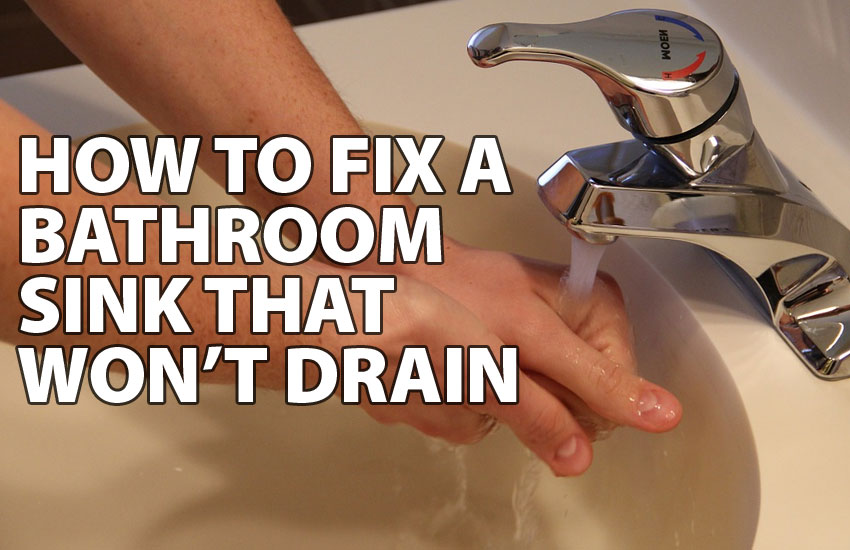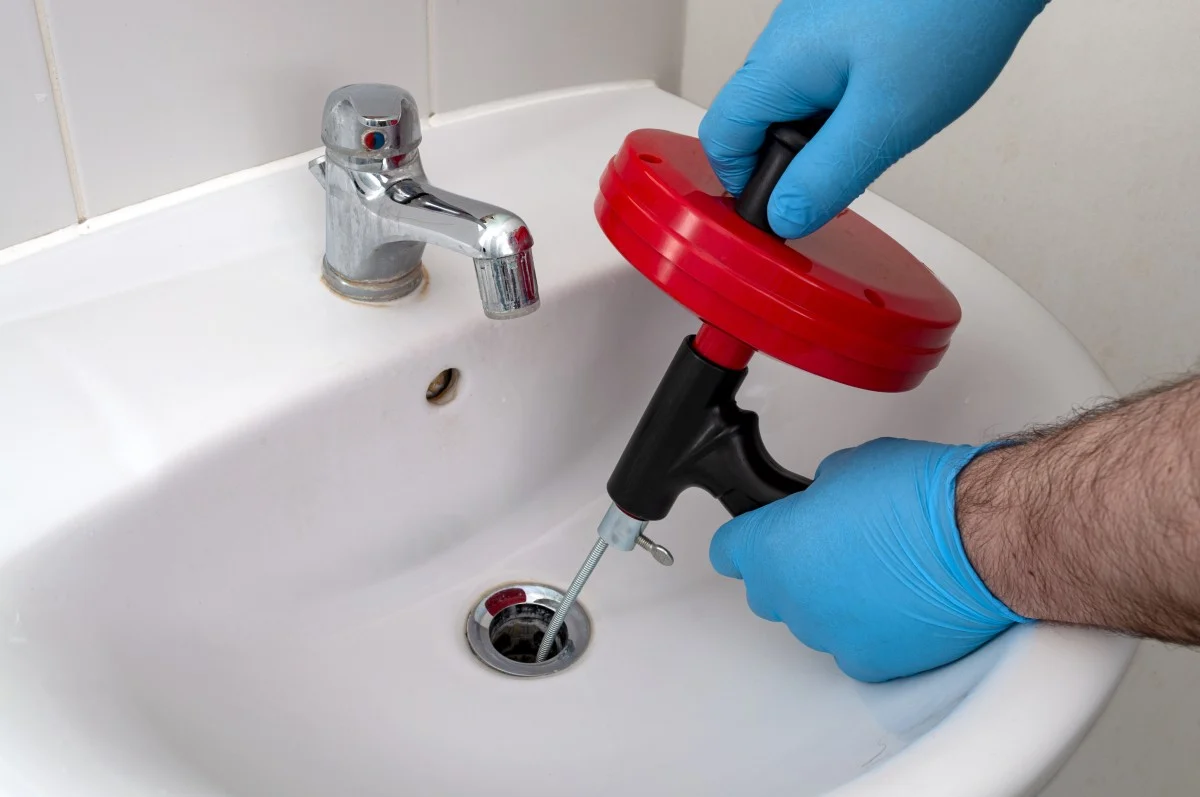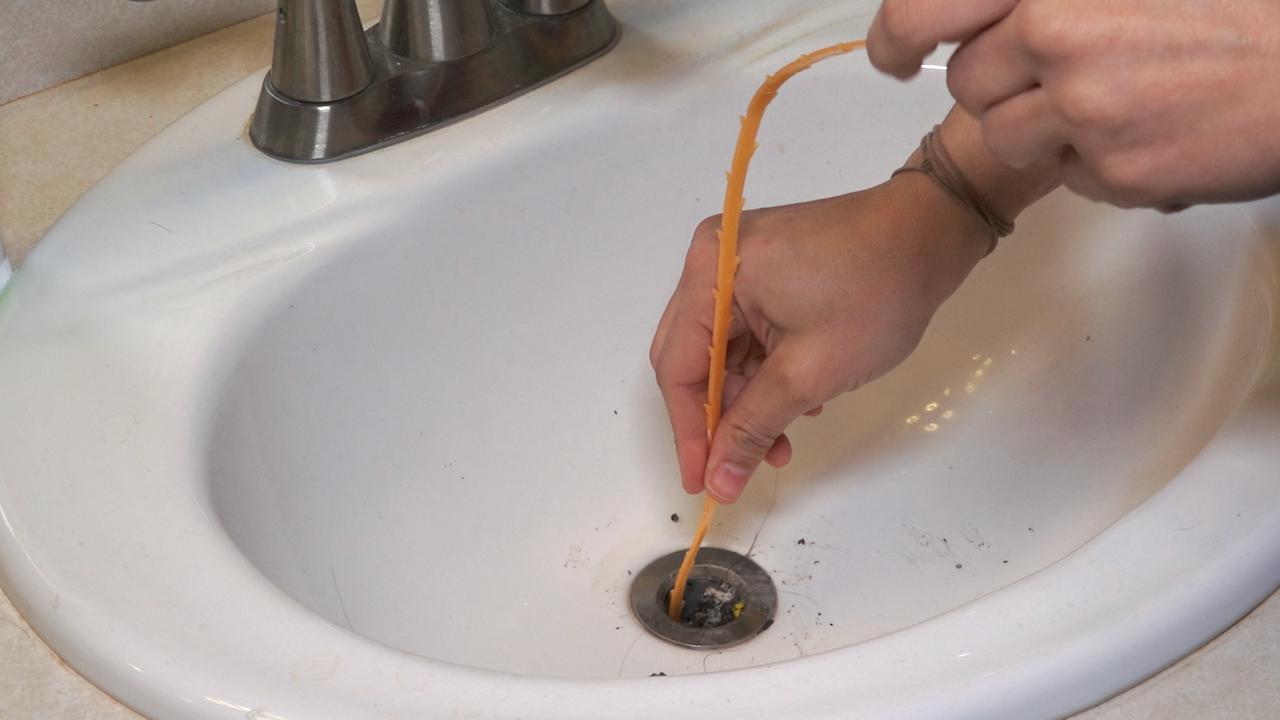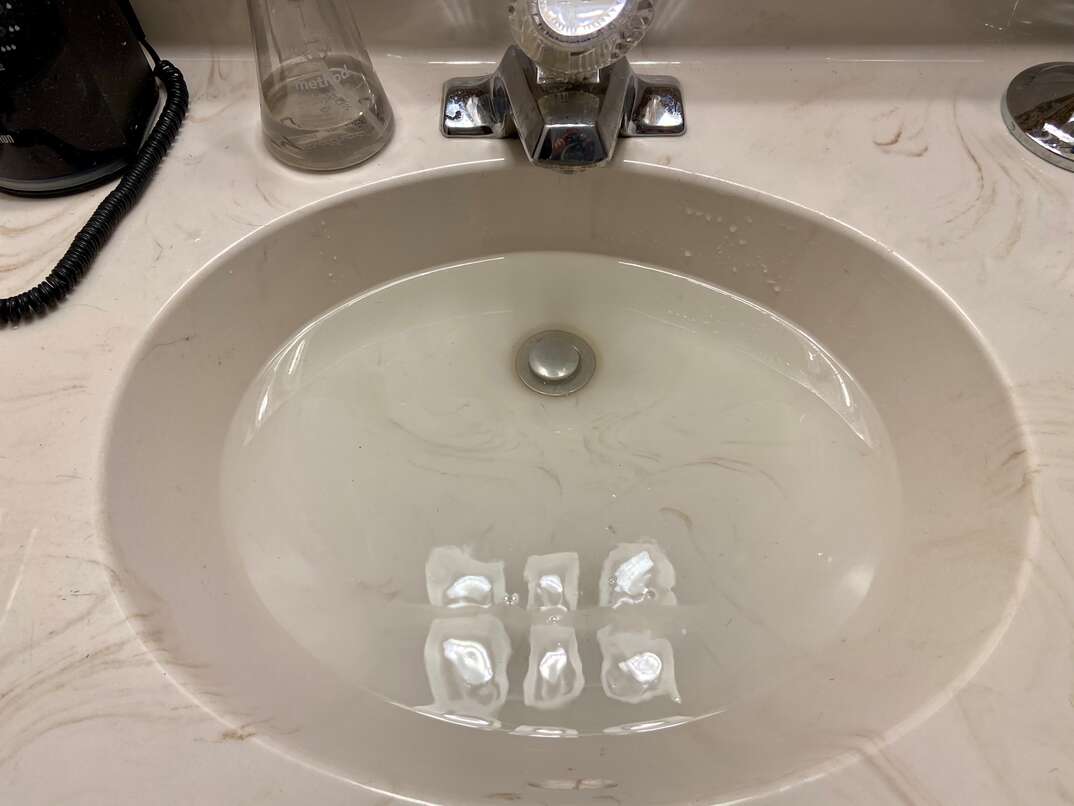Understanding the Causes of a Clogged Bathroom Sink
A clogged bathroom sink can be a frustrating and inconvenient problem to deal with. To effectively address this issue, it is essential to understand the underlying causes of a clogged bathroom sink. By identifying the root of the problem, you can take preventive measures and implement appropriate solutions. Below are the common causes of a clogged bathroom sink and provide insights into how you can avoid them.
- Hair and Soap Residue Buildup: One of the primary culprits behind a clogged bathroom sink is the accumulation of hair and soap residue. As you wash your hair or face, loose strands of hair and soap scum can get trapped in the drain pipe, gradually causing a blockage. Regularly cleaning the sink and using a drain cover can help prevent hair and soap buildup, reducing the risk of clogs.
- Toothpaste and Dental Floss: Another common cause of clogged bathroom sinks is the improper disposal of toothpaste and dental floss. These items can easily get tangled and cause obstructions in the drain pipe. It is crucial to dispose of dental floss in the trash can and rinse the sink thoroughly after brushing to prevent clogs.
- Foreign Objects: Sometimes, small objects such as jewelry, cotton swabs, or even children’s toys can accidentally fall into the bathroom sink drain, leading to a clog. It is important to keep the sink area clear of any objects that could potentially end up in the drain and cause blockages. Being mindful when using the sink can go a long way in preventing such incidents.
- Hard Water Deposits: In areas with hard water, mineral deposits can accumulate over time, leading to clogs in bathroom sinks. These deposits, also known as limescale, can restrict water flow and cause blockages. Regular cleaning with vinegar or a commercial descaler can help remove these deposits and prevent clogs.
- Aging Pipes: Over time, the pipes connected to your bathroom sink can deteriorate and develop cracks or corrosion. These damaged pipes can easily trap debris and lead to clogs. If you notice frequent clogs despite taking preventive measures, it may be a sign that your pipes need inspection and possible replacement.
DIY Methods to Clear a Clogged Bathroom Sink
Dealing with a clogged bathroom sink can be a hassle, but before you call a professional plumber, there are several do-it-yourself (DIY) methods you can try to clear the clog. We will explore some effective and easy-to-implement DIY methods for unclogging a bathroom sink. These methods can help you save time and money, and get your sink back to working order quickly.
- Boiling Water: One of the simplest and most effective DIY methods for unclogging a bathroom sink is pouring boiling water down the drain. Boiling water can help dissolve and flush away soap scum and other debris that may be causing the clog. Carefully pour a pot of boiling water into the drain and let it sit for a few minutes. Repeat this process a few times if necessary.
- Baking Soda and Vinegar: Another popular DIY method involves using a mixture of baking soda and vinegar. Start by pouring a cup of baking soda down the drain. Follow it up with a cup of vinegar. The mixture will create a fizzy reaction that can help break down the clog. Let the mixture sit in the drain for about 30 minutes, then flush it with hot water. Repeat as needed.
- Wire Hanger: If the clog is caused by hair or other solid debris, a wire hanger can be a handy tool to clear the blockage. Straighten out a wire hanger and create a small hook at one end. Insert the hooked end into the drain and try to fish out any hair or debris that may be causing the clog. Be gentle to avoid damaging the pipes.
- Plunger: A plunger is not just for unclogging toilets; it can also be effective in clearing clogs in bathroom sinks. Ensure there is enough water in the sink to cover the plunger cup. Place the plunger over the drain and create a tight seal. Pump the plunger up and down vigorously for several seconds to create suction and dislodge the clog. Repeat if necessary.
- Zip-It Tool: A zip-it tool is a thin, flexible plastic strip with tiny barbs that can be inserted into the drain and used to pull out hair and debris. Push the zip-it tool into the drain until you feel resistance. Twist and pull it back out, allowing the barbs to catch onto any clog-causing material. Dispose of the extracted debris and repeat the process if needed.
Effective Chemical Solutions for Unclogging a Bathroom Sink
When faced with a stubborn clog in your bathroom sink, sometimes DIY methods may not be enough to clear the blockage. In such cases, using chemical solutions specifically designed to unclog drains can be an effective solution. Let’s explore some of the most commonly used chemical solutions for unclogging a bathroom sink and provide insights into their proper usage and safety precautions.
Drain Cleaners: One of the most popular chemical solutions for unclogging bathroom sinks is a drain cleaner. Drain cleaners typically contain strong chemicals such as sodium hydroxide or sulfuric acid that can dissolve hair, soap scum, and other debris causing the clog. Follow the instructions on the product carefully and pour the recommended amount into the sink. Let it sit for the specified time before flushing with hot water. Remember to use drain cleaners sparingly and avoid mixing different types, as they can produce harmful fumes.
Enzyme-based Cleaners: For a more environmentally friendly option, enzyme-based cleaners can be an effective choice. These cleaners use natural enzymes to break down organic matter and promote the decomposition of clogs. Enzyme-based cleaners are typically safe for pipes and can be used regularly as a preventive measure. Follow the instructions provided by the manufacturer, pour the recommended amount into the sink, and allow it to sit for the specified time before rinsing with hot water.
Baking Soda and Vinegar: Although baking soda and vinegar were mentioned earlier as a DIY method, they can also be considered as a chemical solution for unclogging a bathroom sink. When combined, baking soda and vinegar create a chemical reaction that can help break down and dislodge clogs. Pour a cup of baking soda down the drain, followed by a cup of vinegar. Let the mixture sit for about 30 minutes, then flush with hot water. Repeat if necessary.
Caustic Soda: Caustic soda, also known as sodium hydroxide, is a powerful chemical that can dissolve grease, hair, and other organic matter causing clogs. However, it is important to handle caustic soda with extreme caution, as it can cause severe burns and damage to the eyes and skin. Wear protective gloves and eyewear when using caustic soda, and follow the instructions provided by the manufacturer. Remember to thoroughly flush the sink with water after using caustic soda.
Hydrogen Peroxide and Baking Soda: Hydrogen peroxide can be combined with baking soda to create a foaming reaction that helps break down clogs. Mix equal parts of hydrogen peroxide and baking soda to form a paste. Apply the paste directly to the clogged area and let it sit for about 30 minutes. Afterward, rinse the sink with hot water.
When to Call a Professional Plumber for a Clogged Bathroom Sink
While many clogged bathroom sink issues can be resolved through DIY methods, there are instances where it is best to call a professional plumber. Recognizing the signs that indicate the need for professional assistance can help prevent further damage and ensure a thorough resolution to the problem. Let’s discuss when it is appropriate to call a professional plumber for a clogged bathroom sink and the benefits of doing so.
Persistent Clogs: If you have tried multiple DIY methods and the clog keeps recurring, it may be an indication of a more significant underlying issue. Persistent clogs could be a result of a blockage further down the drainpipe or even a damaged pipe. A professional plumber has the expertise and tools to diagnose and address the root cause of the problem efficiently.
Slow Draining: If you notice that your bathroom sink is draining slowly, it could be a sign of a partial clog in the drainpipe. While DIY methods may temporarily improve the situation, a slow-draining sink may indicate a more severe blockage deeper within the plumbing system. A professional plumber can perform a thorough inspection and use specialized equipment to locate and clear the blockage effectively.
Foul Odors: Persistent foul odors emanating from the bathroom sink can be indicative of a clog or a sewer line issue. This can be caused by trapped debris, bacteria growth, or even a broken sewer pipe. A professional plumber can identify the source of the odor and take the necessary steps to eliminate it, ensuring a fresh and hygienic environment in your bathroom.
Multiple Clogged Fixtures: If you experience clogs in multiple fixtures simultaneously, such as the bathroom sink, toilet, and bathtub, it may suggest a more significant plumbing problem affecting the entire drainage system. This could be due to a main sewer line blockage or a problem in the venting system. Calling a professional plumber is crucial in such cases, as they have the expertise to diagnose and repair complex plumbing issues effectively.
Avoiding Further Damage: Attempting to fix a clogged bathroom sink without proper knowledge or tools can potentially lead to further damage. Mishandling pipes or using incorrect methods can result in leaks, pipe breakage, or damage to fixtures. By calling a professional plumber, you can avoid these risks and ensure that the clog is resolved safely and efficiently.
Preventing Future Clogs in Your Bathroom Sink
Dealing with a clogged bathroom sink can be inconvenient and frustrating. To avoid the hassle of unclogging your sink in the future, it is important to take preventive measures. By implementing simple practices and making a few changes to your routine, you can significantly reduce the risk of clogs in your bathroom sink. We will explore some effective strategies for preventing future clogs and keeping your bathroom sink functioning smoothly.
Use a Drain Cover: Investing in a drain cover is an inexpensive and effective way to prevent debris from entering your bathroom sink drain. A drain cover acts as a barrier, catching hair, soap residue, and other particles before they can accumulate and cause a clog. Regularly cleaning the drain cover and removing any trapped debris will help maintain proper water flow.
Dispose of Waste Properly: Proper waste disposal is essential in preventing clogs in your bathroom sink. Avoid rinsing large food particles, grease, or coffee grounds down the sink as they can accumulate and cause blockages. Instead, use a strainer or paper towel to collect food scraps and dispose of them in the trash. Additionally, pour grease into a separate container and dispose of it in the garbage once it solidifies.
Minimize Hair in the Sink: Hair is a common culprit for clogged bathroom sinks. To minimize hair buildup, brush your hair before showering or washing your face to remove loose strands. If possible, install a hair catcher or strainer in your shower drain to prevent hair from entering the sink drain. Regularly cleaning the hair catcher or strainer will ensure its effectiveness in preventing clogs.
Flush with Hot Water: Regularly flushing your bathroom sink with hot water can help prevent the accumulation of soap scum and other residues. Hot water helps dissolve and flush away these substances, keeping your sink clean and reducing the risk of clogs. Once a week, pour a kettle of hot water down the drain to maintain optimal water flow.
Avoid Harsh Chemicals: While chemical solutions can be effective in unclogging a sink, they can also cause damage to your pipes and the environment if overused. Instead of relying on harsh chemicals, consider using natural alternatives like baking soda and vinegar or enzyme-based cleaners for routine maintenance. These solutions are gentle on pipes and eco-friendly.
Regular Maintenance: Performing regular maintenance on your bathroom sink can help prevent future clogs. Clean the sink and drain regularly using a mixture of vinegar and water or a mild detergent. Use a soft brush or toothbrush to scrub away any residue or grime. Additionally, check the pipes and connections periodically for leaks or signs of damage. Addressing any issues promptly can prevent more significant problems down the line.
How to unclog a sink drain
How to Fix a Bathroom Sink That Won’t Drain BFP Bay Area
How to Unclog a Sink — The Right Way
Methods to Unclog a Bathroom Sink Paschal Air
Why Is Bathroom Sink Clogged – How to Unclog It Perfectly?
How to Remove a Sink Stopper – Mother Daughter Projects
How to Unclog a Bathroom Sink with Sink Stopper HomeServe USA
Ways to Unclog a Slow Running Bathroom Sink Drain
Related Posts:
- Bathroom Sink 400mm
- Black Bathroom Sink And Toilet
- Bathroom Sink Vanity With Drawers
- Integrated Bathroom Sink Countertop
- Rustic Bathroom Sink Ideas
- Large Square Bathroom Sink
- Universal Bathroom Sink Stopper
- Bathroom Sink Pedestal Cabinets
- Rustic Bathroom Sinks
- Small Bathroom Sink And Vanity Combo



